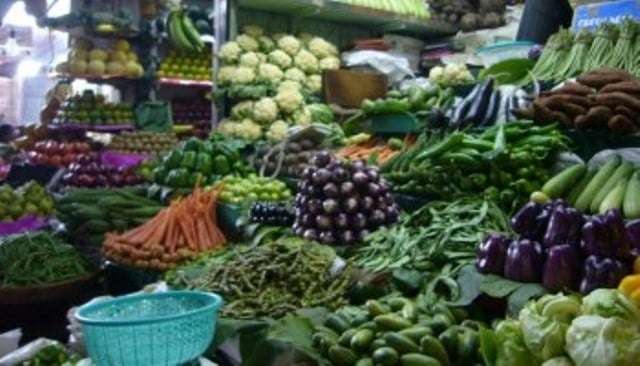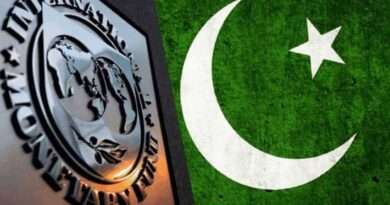Pakistan’s Weekly Inflation Update: Key Insights
|
Getting your Trinity Audio player ready...
|
Overview of Inflation Trends
The Sensitive Price Indicator (SPI) for the week ending February 20, 2025, recorded a 0.27% week-on-week (WoW) increase. Meanwhile, the year-on-year (YoY) SPI rose 1.2%, signaling a moderate inflationary trend compared to prior weeks.
Key Drivers of Inflation
The primary contributors to the recent inflation spike include the rising prices of essential commodities:
- Bananas: 11.89%
- Eggs: 7.80%
- Chicken: 4.47%
- Garlic: 1.08%
- Sugar: 0.65%
- Beef: 0.52%
- Cigarettes: 0.49%
- Mutton: 0.22%
- Pulse Masoor: 0.15%
- Washing Soap: 0.07%
Declining Prices in Key Commodities
Despite an overall rise in SPI, certain items witnessed a decline in prices:
- Tomatoes: -2.81%
- Diesel: -1.49%
- Pulse Gram: -1.24%
- Onions: -1.16%
- Potatoes: -0.90%
- Pulse Mash: -0.60%
- LPG: -0.58%
- Petrol: -0.36%
- Broken Basmati Rice: -0.34%
- Vegetable Ghee: -0.32%
- Pulse Moong: -0.30%
SPI Category-Wise Breakdown
For the week ending February 20, 2025:
- 11 items (21.57%) recorded an increase in prices.
- 16 items (31.37%) saw a decline.
- 24 items (47.06%) remained stable.
Year-on-Year Inflation Impact
A YoY increase of 1.21% in SPI was influenced by price surges in key commodities:
- Ladies’ Sandals: 75.09%
- Pulse Moong: 28.07%
- Pulse Gram: 26.20%
- Powdered Milk: 25.84%
- Bananas: 24.15%
- Beef: 22.47%
- Potatoes: 20.71%
- Garlic: 19.18%
- Vegetable Ghee: 16.41%
- Q1 Gas Charges: 15.52%
- Shirting: 14.11%
- Firewood: 12.73%
Conversely, significant price reductions were observed in:
- Tomatoes: -58.82%
- Onions: -49.86%
- Wheat Flour: -37.05%
- Chilli Powder: -20%
- Q1 Electricity Charges: -18.92%
- Pulse Mash: -12.03%
- Pulse Masoor: -11.43%
- Broken Basmati Rice: -9.15%
- Diesel: -8.07%
- Irri-6/9 Rice: -7.60%
- Petrol: -6.97%
- LPG: -1.32%
Economic Forecast & Market Outlook
According to Arif Habib Limited, headline inflation for February 2025 is projected to decline to a 112-month low of 2.2% YoY, down from 2.4% in January 2025. On a month-on-month (MoM) basis, inflation is expected to decrease by 0.21%, marking the lowest level since October 2015 (1.61%).
8MFY25 Inflation Trends
For the first eight months of FY25 (8MFY25), average inflation stands at 6.04%, a significant reduction from 28% in 8MFY24. Food inflation is expected to decline by:
- 1.1% MoM
- 2.6% YoY
Notable price reductions in essential staples include:
- Wheat Flour: -1.6%
- Eggs: -10.8%
- Potatoes: -22.2%
- Onions: -24.9%
- Tomatoes: -51.7%
Housing and Energy Index Trends
The housing and energy index is projected to decline 0.3% MoM, attributed to:
- 1.3% decrease in electricity prices
- Negative Fuel Cost Adjustment (FCA) of Rs1.23 per kWh for December 2024 (compared to Rs0.76 in the prior month)
Transport Index Volatility
The transport index is expected to rise 1.1% MoM, driven by increased petrol and diesel prices. However, YoY, it remains 0.3% lower, reflecting a high base effect from last year.
Future Inflationary Trends
Several factors contribute to the ongoing reduction in YoY inflation:
- High base effect from 2024
- Lower food and housing costs
- Stable Pakistani rupee and global commodity prices
If these conditions persist, inflation is expected to stay contained, offering relief to consumers.
FAQs
1. What caused the recent increase in inflation?
The rise in inflation was mainly due to price hikes in essential food items like bananas, eggs, and chicken.
2. What items saw the highest price drops?
Tomatoes, onions, wheat flour, and petrol experienced the most significant price declines.
3. How does this inflation compare to past months?
Inflation is showing a downward trend compared to mid-2024, which saw double-digit growth.
4. What is the forecasted inflation rate for February 2025?
Analysts project a 2.2% YoY inflation rate, the lowest in 112 months.
5. What could stabilize inflation moving forward?
Stable global commodity prices and a strong Pakistani rupee are key factors in containing inflation.
ALSO READ
https://skipper.pk/2025/02/22/pakistan-turkiye-trade-partnership/




